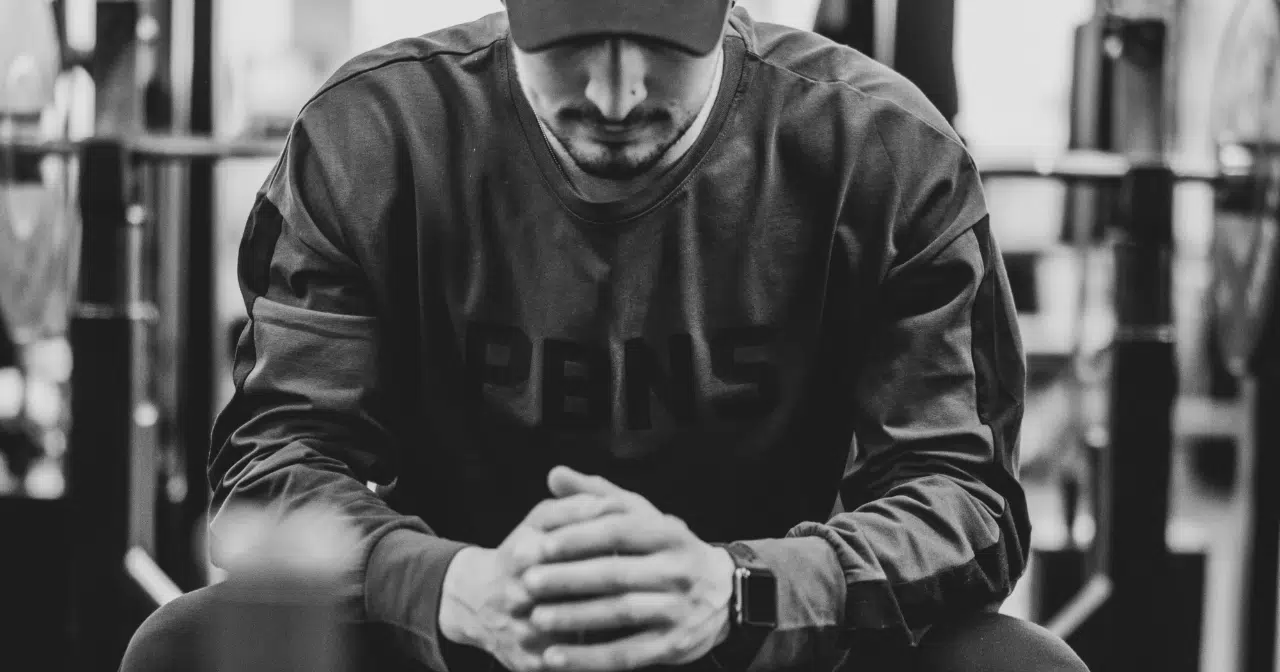Listen on: Apple Podcasts | Spotify
Tennis elbow, or lateral epicondylitis, is a common condition affecting many people, regardless of whether they play tennis. It occurs when the tendons that attach your forearm muscles to your lateral epicondyle (the bony bump outside your elbow) become inflamed, resulting in pain and tenderness.1American Academy of Orthopaedic Surgeons. (2013). Tennis Elbow (Lateral Epicondylitis). Retrieved from https://orthoinfo.aaos.org/en/diseases–conditions/tennis-elbow-lateral-epicondylitis/
Although tennis is a well-known cause of this condition, other common causes include repetitive movements or overuse of the forearm muscles in activities such as gardening, painting, playing musical instruments, manual labor, using a computer mouse, playing sports, and weight training.2Mayo Clinic. (2018). Tennis Elbow. Retrieved from https://www.mayoclinic.org/diseases-conditions/tennis-elbow/symptoms-causes/syc-20351987 I developed tennis elbow in the winter of 2022, and even though many activities were painful, I didn’t let it slow me down. Recovery from tennis elbow can be a slow process, but it doesn’t mean you have to put your life on hold. In fact, you shouldn’t.
In this article, we will explore ways to maintain exercise and activity while recovering, aiming to get you back to your regular routine as quickly and safely as possible.
Start with R.I.C.E.
One of the first steps in recovering from tennis elbow is to use the RICE method, which stands for Rest, Ice, Compression, and Elevation.3Cleveland Clinic. (2018). RICE Therapy: How to Care for an Injury. Retrieved from https://my.clevelandclinic.org/health/articles/12051-rice-therapy Here’s how each component can aid your recovery:
- Rest: Give your injured arm a break from the activities that caused or aggravated the condition. This allows the inflammation to subside and prevents further damage to the tendons. However, resting the injured part of your arm does not mean you need to rest your entire body. You can still do various exercises on your injured arm and train the rest of your body as usual. I recommend using wrist straps so you can still handle heavier weights without putting unnecessary strain on the muscles causing tennis elbow. Resistance training is the ideal form of exercise to speed up injury recovery because you secrete recovery-supporting hormones after your workouts.
- Ice: Applying ice to the affected area can help reduce inflammation and pain. Aim for 15-20 minutes of ice application every few hours during the first 48-72 hours after the injury.
- Compression: Using an elastic bandage or a specialized tennis elbow strap can help provide support and reduce swelling. Ensure it’s snug but not too tight, as excessive pressure could impede blood flow. I found that by using a tennis elbow compression strap, I could do many activities without nearly as much pain. The strap presses down on the muscles causing the pain, essentially relaxing them while the rest of the muscles in your arm complete the exercise or activity you want them to.
- Elevation: Elevating the injured arm above heart level can help minimize swelling by promoting venous return.
If your symptoms persist or worsen despite following the RICE method, consult a healthcare professional for a proper evaluation and a personalized treatment plan. They may recommend physical therapy, medication, or other interventions as needed.4American Academy of Orthopaedic Surgeons. (2013). Tennis Elbow (Lateral Epicondylitis). Retrieved from https://orthoinfo.aaos.org/en/diseases–conditions/tennis-elbow-lateral-epicondylitis/
I would also recommend looking for a Muscle Activation Techniques practitioner in your area, or at least a physical therapist (PT) who works with high-performing athletes. Many PTs go through the motions, having their patients do meaningless stretches and exercises. Physical Therapists who work with high-performing athletes have a different objective in mind. They must get their patients back in the game as quickly as possible. That’s what you want.
Exercises to Treat Tennis Elbow
If you consult the average medical website, they’ll undoubtedly recommend you do low-impact exercises that don’t strain the affected arm, such as swimming, walking, or stationary cycling.5Harvard Health Publishing. (2019). Tennis Elbow: How to Avoid and Treat. Retrieved from https://www.health.harvard.edu/blog/tennis-elbow-how-to-avoid-and-treat-2019091617727 That’s ridiculous. You didn’t break your neck; you hurt your elbow. You’ll benefit far more from strength training and won’t lose muscle as you recover from your tennis elbow injury.
That said, there are some specific exercises you can do in addition to your usual training session, which will help reduce your pain and speed up the recovery process. You could do these movements at any time during the day, but you might find it easier to include them before or after your regular workout to ensure you get your rehab and resistance training done. Because these exercises are not intense, you can do them every day, even if you don’t have a planned gym workout.
- Eccentric Wrist Extension: Sit in a chair with a light dumbbell in your affected hand, palm facing down. Rest your forearm on your thigh with your wrist hanging over your knee. Use your unaffected hand to lift the dumbbell, assisting your affected hand. Slowly lower the dumbbell with your affected hand, taking about 4-5 seconds. Repeat for 10-15 repetitions and 2-3 sets.6Tyler, T. F., Thomas, G. C., Nicholas, S. J., & McHugh, M. P. (2010). Addition of isolated wrist extensor eccentric exercise to standard treatment for chronic lateral epicondylosis: a prospective randomized trial. The Journal of Orthopaedic and Sports Physical Therapy, 40(12), 802-809.
- Eccentric Wrist Flexion: Sit in a chair with a light dumbbell in your affected hand, palm facing up. Rest your forearm on your thigh with your wrist hanging over your knee. Use your unaffected hand to lift the dumbbell, assisting your affected hand. Slowly lower the dumbbell with your affected hand, taking about 4-5 seconds. Repeat for 10-15 repetitions and 2-3 sets.
- Forearm Pronation and Supination:7Peterson, M., Butler, S., Eriksson, M., & Svärdsudd, K. (2014). A randomized controlled trial of exercise versus wait-list in chronic tennis elbow (lateral epicondylosis). Upsala journal of medical sciences, 119(4), 352-359. Hold a light dumbbell or hammer in your affected hand with your elbow bent at 90 degrees and your forearm parallel to the floor. Slowly rotate your forearm so that your palm faces up, then rotate it back so your palm faces down. Repeat for 10-15 repetitions and 2-3 sets.
- Grip Strength Exercises: Use a grip strengthener or a soft ball (not a softball), and squeeze it with your affected hand for 5 seconds. Relax and repeat for 10-15 repetitions and 2-3 sets.
- Shoulder and Upper Back Exercises:8Cullinane, F. L., Boocock, M. G., & Trevelyan, F. C. (2014). Is eccentric exercise an effective treatment for lateral epicondylitis? A systematic review. Clinical Rehabilitation, 28(1), 3-19. It might take a little trial and error to figure out which exercises you can that don’t cause pain, but you need to keep training your upper body. As I mentioned, try using wrist straps to reduce the tension on your forearms for pulling movements like rows and pulldowns. Use a machine for lateral raises instead of dumbbells, or do wide-grip upright rows in place of lateral raises.
- Wrist Extensor Stretch: Extend your affected arm straight in front of you with your palm facing down. Use your opposite hand to gently bend your wrist downward, feeling a stretch in the forearm. Hold for 15-30 seconds and repeat 2-3 times.
- Wrist Flexor Stretch: Extend your affected arm straight in front of you with your palm facing up. Use your opposite hand to gently bend your wrist downward, feeling a stretch in the forearm. Hold for 15-30 seconds and repeat 2-3 times.
Whatever you do, don’t give up and stop exercising altogether. If you do, you’ll not only get weaker, but you’ll also be more likely to develop tennis elbow again shortly after you restart your training program.
Nutrients and Supplements to Recover From Tennis Elbow
The following are well-supported supplements, botanicals and essential oils that may speed up the recovery process or at least help to dull your pain.
Vitamin C
This antioxidant plays a crucial role in collagen synthesis, which is essential for tendon repair and maintenance.9Carr, A. C., & Maggini, S. (2017). Vitamin C and immune function. Nutrients, 9(11), 1211. Vitamin C also supports immune function, which can be beneficial during recovery.
Food sources of vitamin C include citrus fruits, strawberries, kiwi, bell peppers, and broccoli.
The recommended daily dosage of vitamin C to support tennis elbow recovery can range from 75-200 mg per day, depending on individual needs.10National Institutes of Health, Office of Dietary Supplements. (2021). Vitamin C: Fact Sheet for Health Professionals. Retrieved from https://ods.od.nih.gov/factsheets/VitaminC-HealthProfessional/
Collagen
Collagen is the primary protein in connective tissues, including tendons. Studies have shown that collagen supplementation can improve tendon strength and stimulate the production of tendon cells, known as tenocytes.11Zdzieblik, D., Oesser, S., Baumstark, M. W., Gollhofer, A., & König, D. (2015). Collagen peptide supplementation in combination with resistance training improves body composition and increases muscle strength in elderly sarcopenic men: a randomised controlled trial. The British journal of nutrition, 114(8), 1237-1245.,12Shaw, G., Lee-Barthel, A., Ross, M. L., Wang, B., & Baar, K. (2017). Vitamin C–enriched gelatin supplementation before intermittent activity augments collagen synthesis. The American journal of clinical nutrition, 105(1), 136-143.
Consuming bone broth or taking hydrolyzed collagen supplements can help provide the body with the necessary amino acids to support tendon health.
Supplement with 10-15 grams per day, taken with a source of vitamin C to improve absorption.
Magnesium
Magnesium plays a vital role in muscle and nerve function and has been shown to help reduce muscle cramps and soreness.13Nielsen, F. H., & Lukaski, H. C. (2006). Update on the relationship between magnesium and exercise. Magnesium Research, 19(3), 180-189. Additionally, magnesium aids in producing adenosine triphosphate (ATP), which is necessary for cellular energy and muscle contractions.
Foods rich in magnesium include nuts, seeds, legumes, and leafy greens.
The recommended daily dosage of magnesium to support tennis elbow recovery can range from 300-400 mg per day, though some people benefit from much higher dosages.14National Institutes of Health, Office of Dietary Supplements. (2021). Magnesium: Fact Sheet for Health Professionals. Retrieved from https://ods.od.nih.gov/factsheets/Magnesium-HealthProfessional/
Bromelain
Bromelain is an enzyme found in pineapple that has anti-inflammatory properties. Bromelain works by breaking down proteins involved in inflammation and reducing the production of inflammatory substances.15Pavan, R., Jain, S., Shraddha, & Kumar, A. (2012). Properties and therapeutic application of bromelain: a review. Biotechnology Research International, 2012.
Studies have shown that bromelain can help reduce pain and swelling in various inflammatory conditions, including tennis elbow.16Brien, S., Lewith, G., Walker, A., Hicks, S. M., & Middleton, D. (2004). Bromelain as a treatment for osteoarthritis: a review of clinical studies. Evidence-based complementary and alternative medicine, 1(3), 251-257. The recommended dosage of bromelain varies depending on the product, but a common range is 200-400 mg, taken 2-3 times a day on an empty stomach.17University of Michigan Health. (2021). Bromelain. Retrieved from https://www.uofmhealth.org/health-library/hn-2815005
Curcumin
Curcumin is a compound in turmeric with anti-inflammatory and antioxidant effects. Curcumin works by inhibiting the activity of certain enzymes and signaling molecules involved in inflammation.18Hewlings, S. J., & Kalman, D. S. (2017). Curcumin: a review of its effects on human health. Foods, 6(10), 92. Research has shown that curcumin can help reduce pain and improve function in people with various musculoskeletal disorders, including tendonitis.19Daily, J. W., Yang, M., & Park, S. (2016). Efficacy of turmeric extracts and curcumin for alleviating the symptoms of joint arthritis: a systematic review and meta-analysis of randomized clinical trials. Journal of Medicinal Food, 19(8), 717-729.
The recommended dosage of curcumin varies depending on the product, but a common range is 500-1000 mg per day, taken with a meal containing fat to improve absorption.20University of Michigan Health. (2021). Turmeric. Retrieved from https://www.uofmhealth.org/health-library/hn-2180004 Look for supplements containing black pepper extract (piperine), or curcumin phytosome to further enhance absorption.
Topical Essential Oils
Wintergreen oil contains a compound called methyl salicylate, which has analgesic and anti-inflammatory properties similar to aspirin.21Zhang, Y., Wang, D., Yang, Y., Liu, H., Lu, P., & Wang, Z. (2018). Wintergreen oil: a novel and effective therapeutic agent for human skin cancer. Journal of Dermatological Science, 89(3), 232-239 It may help alleviate pain and inflammation associated with tennis elbow when applied topically. Menthol-containing essential oils, such as peppermint and eucalyptus, can create a cooling sensation on the skin, which may help numb pain and relieve discomfort.22Eccles, R., Wilkinson, J. E., & Jawad, M. S. (2015). Menthol: a review of its thermoregulatory, pharmacological, and psychological effects. Advances in Therapy, 32(1), 3-26.
When applied to the affected area, lavender and frankincense essential oils may help alleviate pain and inflammation. Lavender oil has been shown to possess analgesic and anti-inflammatory properties, making it a potential natural remedy for reducing pain and inflammation.23Hajhashemi, V., Ghannadi, A., & Sharif, B. (2003). Anti-inflammatory and analgesic properties of the leaf extracts and essential oil of Lavandula angustifolia Mill. Journal of Ethnopharmacology, 89(1), 67-71. Frankincense oil has been used traditionally to treat various inflammatory conditions, and recent studies have supported its potential as an anti-inflammatory agent.24Rahimi, R., & Abdollahi, M. (2012). A review of the efficacy of traditional Iranian medicine for inflammatory bowel disease. World Journal of Gastroenterology, 16(36), 4504.
Alternative and Complimentary Therapies for Tennis Elbow
Depending on the severity of your tennis elbow pain, and your budget, you might want to consider one or more of the following alternative and complimentary tennis elbow therapies.
- Acupuncture: Acupuncture involves the insertion of thin needles into specific points on the body to help alleviate pain and promote healing. Studies have shown that acupuncture can effectively reduce pain and improve function in tennis elbow patients.25Gadau, M., Yeung, W. F., Liu, H., Zaslawski, C., Tan, Y. S., Wang, F. C., … & Zhang, S. P. (2014). Acupuncture and moxibustion for lateral elbow pain: a systematic review of randomized controlled trials. BMC Complementary and Alternative Medicine,14(1), 136.
- Massage Therapy: Massage therapy, particularly deep tissue massage and friction massage, can help relieve tension in the forearm muscles and tendons, which may contribute to tennis elbow pain.26Draper, D. O., Mahaffey, C., Kaiser, D., Eggett, D., & Jarmin, J. (2010). Thermal ultrasound decreases tissue stiffness of trigger points in upper trapezius muscles. Physiotherapy Theory and Practice, 26(3), 167-172. Regular massage sessions may help prevent the recurrence of tennis elbow symptoms.
- Chiropractic Care: Chiropractic treatment may help alleviate tennis elbow symptoms by addressing underlying musculoskeletal imbalances and promoting proper joint function.27Bergquist, A., Clair, D., Lagerquist, O., Mangine, R. E., & Simons, D. G. (2008). The immediate effects of cervical spine manipulation on pain and biochemical markers in females with acute non-specific mechanical neck pain: a randomized clinical trial. Journal of Manipulative and Physiological Therapeutics, 31(7), 498-504. Chiropractors can perform adjustments and soft tissue techniques to help reduce pain and improve range of motion. Treatment frequency and duration will depend on individual needs and the severity of the condition.
- Extracorporeal Shock Wave Therapy (ESWT): ESWT is a non-invasive treatment that uses shock waves to stimulate the body’s natural healing process in the affected tendon. Studies have shown that ESWT can be an effective treatment for reducing pain and improving function in patients with tennis elbow.28Rompe, J. D., & Cacchio, A. (2021). Shock Wave Therapy and Platelet-Rich Plasma for the Treatment of Tennis Elbow: A Comprehensive Review. International Journal of Environmental Research and Public Health, 18(19), 10408.,29Rompe, J. D., Decking, J., Schoellner, C., & Theis, C. (2004). Repetitive low-energy shock wave treatment for chronic lateral epicondylitis in tennis players. The American Journal of Sports Medicine, 32(3), 734-743. Your healthcare provider may recommend ESWT if other conservative treatments have not provided significant relief.
- Platelet-Rich Plasma (PRP) Injections: PRP injections involve injecting a concentrated solution of the patient’s own platelets into the affected tendon. Platelets are rich in growth factors that can promote tissue healing and repair. Some studies have shown promising results in using PRP injections to treat tennis elbow, although further research is needed to establish the optimal protocols and long-term effectiveness of this treatment.30Mishra, A., Pavelko, T., Uchida, S., Galatz, L. M., & Skrepnik, N. V. (2017). Platelet-rich plasma significantly improves clinical outcomes in patients with chronic tennis elbow: a double-blind, prospective, multicenter, controlled trial of 230 patients. The American Journal of Sports Medicine, 41(2), 260-267.
- Prolotherapy: Prolotherapy is an injection-based treatment that involves injecting a solution, usually containing dextrose, into the affected tendon. The aim is to create a mild inflammatory response, which may help stimulate the body’s natural healing process and promote tissue repair.31Hauser, R. A., Hauser, M. A., & Holian, P. (2013). Dextrose prolotherapy for unresolved elbow pain. Practical Pain Management, 13(10), 64-68. Some studies have shown positive results with prolotherapy for treating tennis elbow, although more research is needed to establish its effectiveness.
- Autologous Blood Injections: This treatment involves injecting a small amount of the patient’s own blood into the affected tendon to promote the body’s natural healing response. Some studies have shown positive results with autologous blood injections for treating tennis elbow, although more research is needed to establish its effectiveness and optimal protocols.32Edwards, S. G., & Calandruccio, J. H. (2003). Autologous blood injections for refractory lateral epicondylitis. The American Journal of Orthopedics, 32(3), 128-131. Autologous blood injections should only be considered under the guidance of a healthcare professional.
Summary
Recovering from tennis elbow doesn’t mean you have to stop exercising altogether. By modifying your workouts, focusing on continued activity, and following a comprehensive recovery plan, you can successfully return to your regular routine. Remember to be patient with your body, consult your healthcare professional as needed, and prioritize proper technique and equipment use to prevent future injuries.
Whatever you do, don’t stop exercising. As I often tell my clients, the more active you are, the more likely it is that you’ll be sore often, hurt every once in a while, and injured occasionally. Fortunately, your body has a miraculous ability to heal itself, especially when you add on some of the nutrients, supplements, or therapies discussed in this article.
Photo by Eddie Jones on Unsplash



